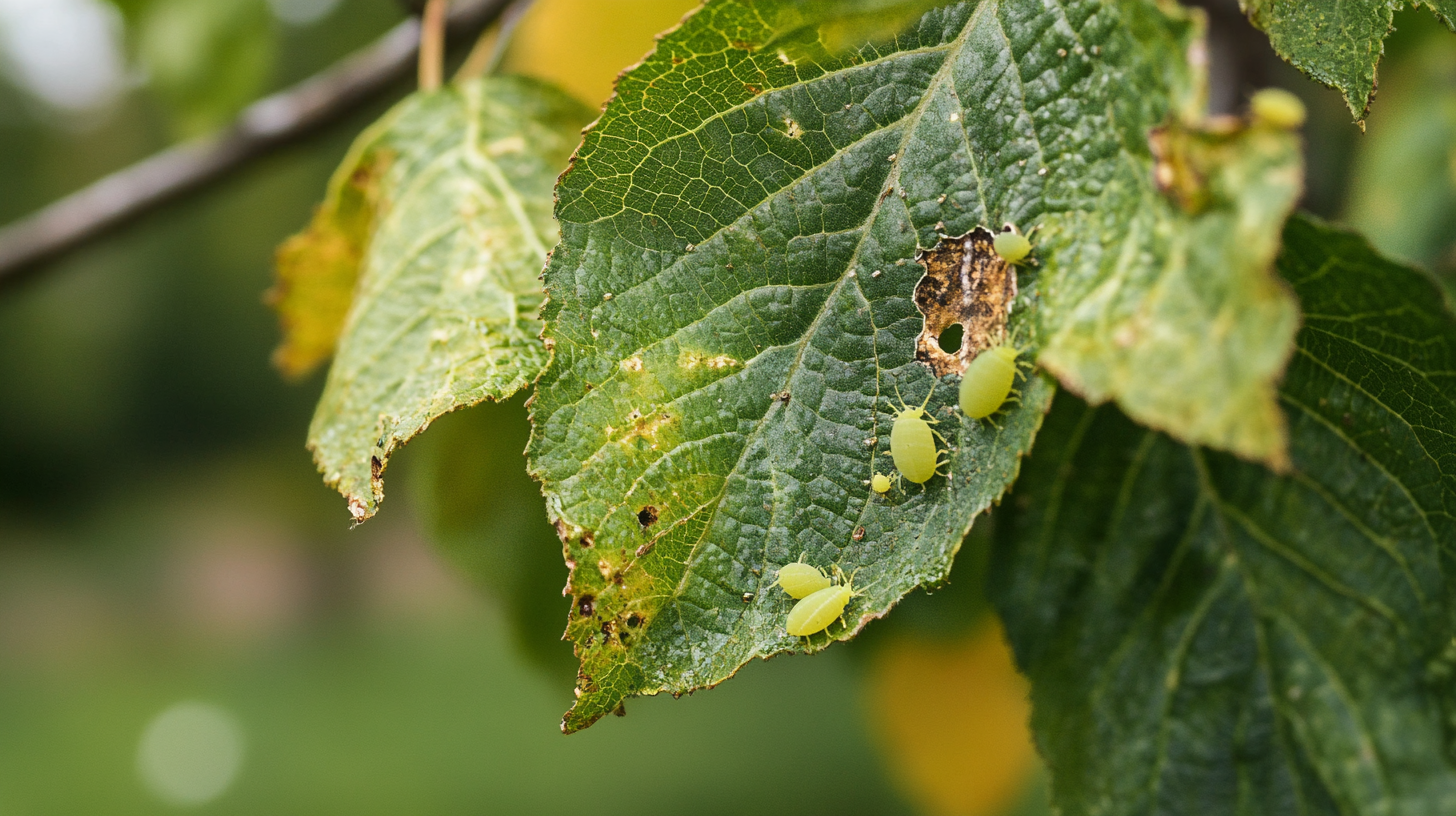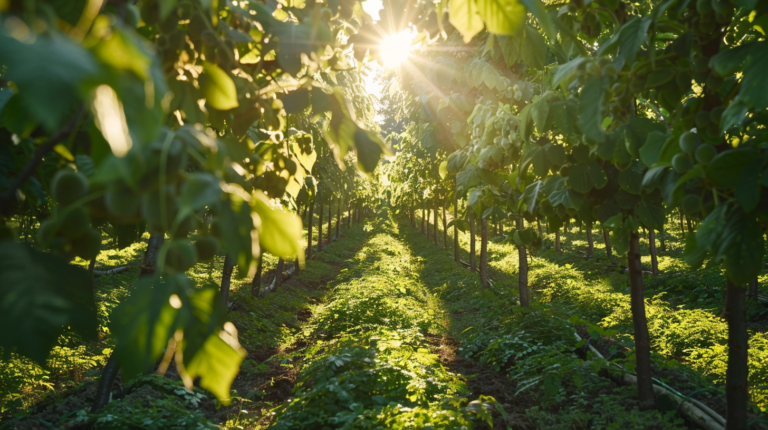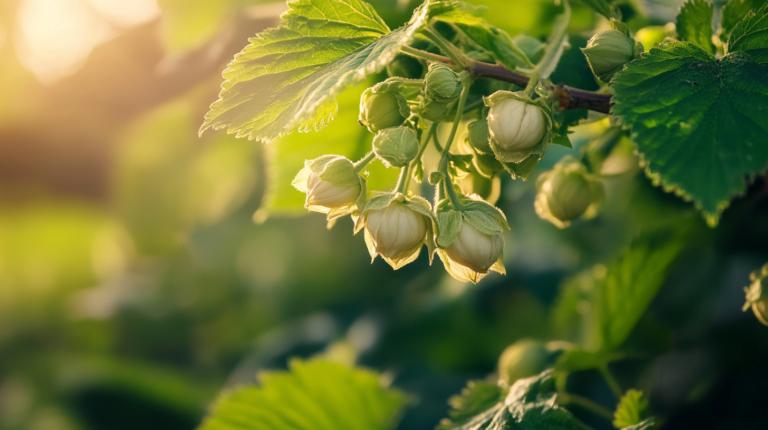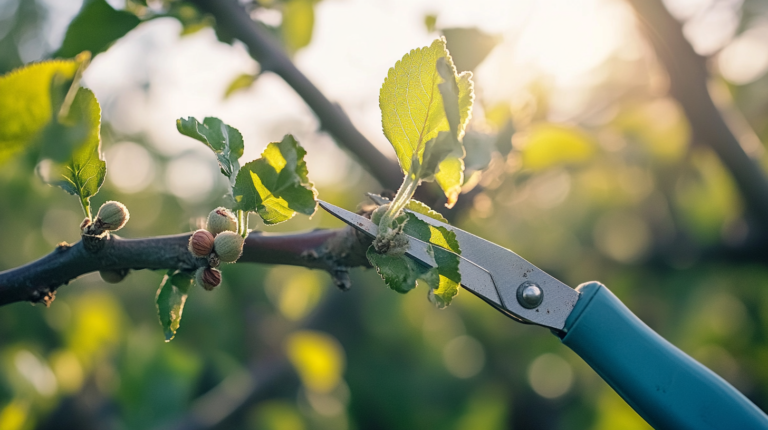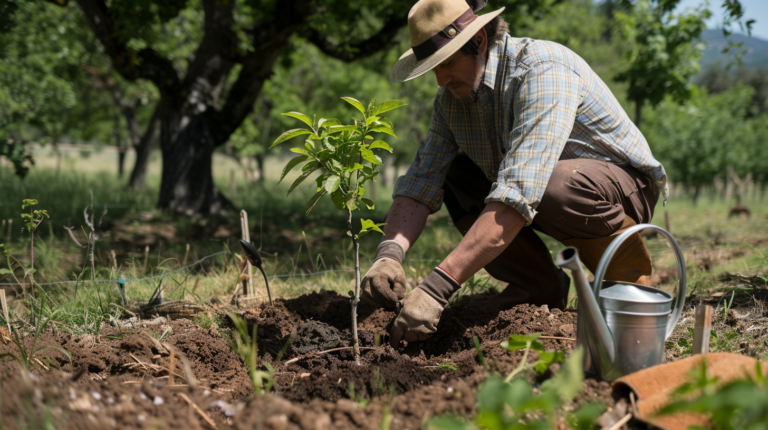How to Control Hazelnut Pests Effectively: A Comprehensive Guide
Controlling common hazelnut pests requires a comprehensive integrated pest management (IPM) approach. Here’s an in-depth guide on how to manage the most prevalent pests affecting hazelnut orchards:
Filbertworm
The filbertworm (Melissopus latiferreanus) is one of the most significant pests of hazelnuts. These moths can cause substantial damage to the crop if left unchecked.
Identification and Monitoring
Filbertworm moths have a distinctive iridescent copper band across their wings. To monitor their presence:
- Use pheromone traps placed in the upper third of the tree canopy.
- Install 4 traps for the first 10 acres, adding one trap for every additional 4 acres.
- Begin monitoring by late June and check traps weekly.
- Increase checks to twice weekly once moths are detected.
Control Methods
- Mating Disruption: Use pheromone dispensers to confuse male moths and prevent mating.
- Insecticides: Apply targeted sprays when moth populations reach economic thresholds. Time applications based on trap catches and degree-day models.
- Orchard Sanitation: Remove and destroy infested nuts to reduce overwintering populations.
- Biological Control: Encourage natural predators like parasitic wasps.
Aphids
Two main species affect hazelnuts: filbert aphids and hazelnut aphids. These pests can weaken trees and reduce yields.
Identification and Monitoring
- Filbert aphids are pale white or yellow, while hazelnut aphids are darker.
- Sample 20 trees for every 2-4 acres of orchard.
- Examine the newest fully expanded leaf on three terminals per tree.
- Monitor every other week once leaves have fully developed.
Control Methods
- Biological Control: Encourage natural predators like ladybugs and lacewings. Ladybug larvae, which resemble tiny crocodiles, are particularly voracious aphid eaters.
- Economic Thresholds: Take action when aphid counts reach:
- 20 aphids per leaf in April
- 30 aphids per leaf in May
- 40 aphids per leaf in June and July
- Insecticides: Use selective insecticides that target aphids while preserving beneficial insects.
- Cultural Practices: Avoid excessive nitrogen fertilization, which can promote aphid populations.
Eastern Filbert Blight
While not an insect pest, Eastern Filbert Blight (EFB) is a significant fungal disease affecting hazelnuts.
Identification and Monitoring
- Look for cankers on branches with rows of black fungal stromata.
- Monitor orchards regularly, especially during late winter and early spring.
Control Methods
- Resistant Varieties: Plant EFB-resistant cultivars when establishing new orchards.
- Pruning: Remove and destroy infected branches, cutting at least 1 foot below visible cankers.
- Fungicides: Apply protective fungicides during the susceptible period (budbreak to early summer).
- Orchard Design: Plant trees with adequate spacing to improve air circulation and reduce humidity.
Big Bud Mite
The hazelnut big bud mite (Phytoptus avellanae) can cause significant damage to developing buds.
Identification and Monitoring
- Look for swollen, deformed buds that fail to develop normally.
- Monitor orchards in late winter to early spring for affected buds.
Control Methods
- Pruning: Remove and destroy infested buds during winter pruning.
- Sulfur Applications: Apply sulfur during bud break to reduce mite populations.
- Timing: Time sulfur applications to coincide with mite migration periods.
- Resistant Varieties: Some hazelnut varieties show greater resistance to big bud mites.
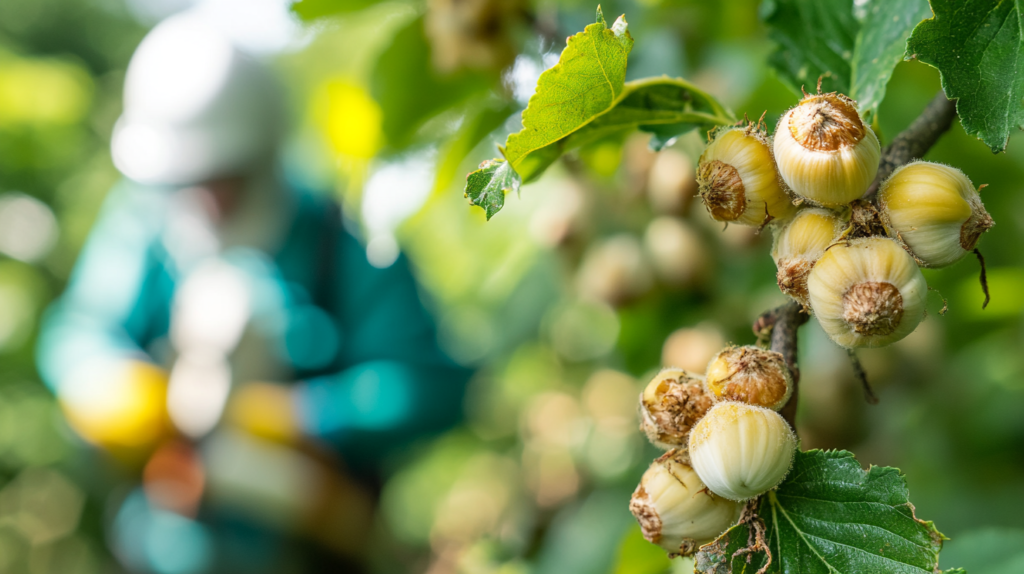
Leafrollers
Several species of leafroller moths can affect hazelnuts, including the filbert leafroller and obliquebanded leafroller.
Identification and Monitoring
- Look for rolled or webbed leaves containing caterpillars.
- Use pheromone traps to monitor adult moth populations.
Control Methods
- Biological Control: Encourage natural predators and parasitoids.
- Bacillus thuringiensis (Bt): Apply Bt sprays to target young caterpillars.
- Timing: Time insecticide applications to coincide with peak egg hatch.
- Pheromone Disruption: Use mating disruption techniques for larger orchards.
General IPM Strategies
To effectively control hazelnut pests, implement these overarching IPM strategies:
- Regular Monitoring: Consistently check orchards for pest presence and damage.
- Record Keeping: Maintain detailed records of pest populations, treatments, and their effectiveness.
- Economic Thresholds: Base treatment decisions on established economic thresholds to avoid unnecessary pesticide use.
- Selective Pesticides: When chemical control is necessary, choose pesticides that target specific pests while minimizing harm to beneficial insects.
- Resistance Management: Rotate pesticide classes to prevent the development of resistant pest populations.
- Orchard Sanitation: Remove and destroy crop debris and fallen nuts to reduce overwintering pest populations.
- Encourage Biodiversity: Maintain diverse vegetation around orchards to provide habitat for beneficial insects.
- Nutrient Management: Ensure balanced fertilization to promote tree health and natural pest resistance.
- Water Management: Avoid over-irrigation, which can create favorable conditions for certain pests and diseases.
- Pruning and Training: Maintain open tree canopies to improve air circulation and pesticide penetration.
- Trap Crops: Consider planting trap crops to draw pests away from the main orchard.
- Timing: Coordinate pest control activities with hazelnut tree phenology and pest life cycles.
By implementing these comprehensive IPM strategies, hazelnut growers can effectively manage pest populations while minimizing environmental impact and preserving beneficial insects. Regular consultation with local extension services and staying updated on the latest pest management research will help ensure the most effective and sustainable pest control practices in hazelnut orchards.
Sorces:
[1] https://en.pasargadnuts.com/blog/15/care-and-maintenance-of-hazelnut-pests
[2] https://accioncontraelhambre.org/sites/default/files/documents/ipm_guide_eng_0.pdf
[3] https://extension.oregonstate.edu/catalog/pub/em-9081-growing-hazelnuts-pacific-northwest-integrated-pest-management
[4] https://ontariohazelnuts.com/index.php/integrated-pest-management-ipm/
[5] https://wcngg.com/2021/01/04/integrated-pest-management-in-hazelnuts/
[6] https://ipmdata.ipmcenters.org/documents/pmsps/ORWA_Hazelnut.pdf
[7] https://www2.gov.bc.ca/gov/content/industry/agriservice-bc/production-guides/hazelnuts/hazelnut-insect-management
